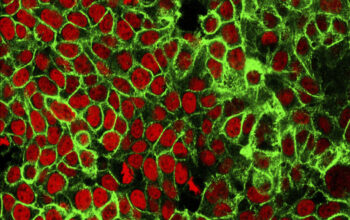Scientists have accidentally created a mouse embryo with six legs and no genitals – revealing how changes to DNA can have major impacts on development.
The team, from the Gulbenkian Science Institute in Oeiras, Portugal, were investigating how a particular protein works during the middle stages of embryo growth.
Embryos begin as just a bundle of identical cells. As they develop, cells specialise and begin to form different body parts, generally starting at the head and moving back towards the tail – yes, even humans have tails in the early days, but it disappears around eight weeks.
Scientists already knew that, in most four-limbed mammals, both the external genitalia (the penis or clitoris) and the hind limbs develop from the same early structures.
The team, led by developmental biologist Moisés Mallo, focused on one particular receptor protein, Tgfbr1.
The protein, officially called transforming growth factor beta receptor I, is involved in the expression of genes – basically, helping decide which ones to activate where, deciding what each cell should become, for example, a blood cell, muscle tissue or a nerve cell.

















